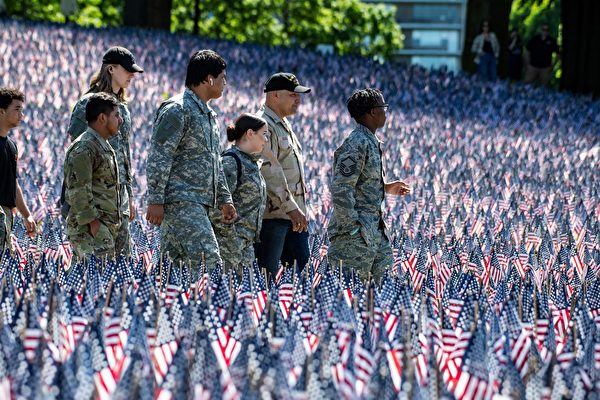Memorial Day, originally commemorating soldiers who died in the American Civil War, with the highest casualty numbers in U.S. history. Now, the holiday is meant to honor all American military personnel who have made the ultimate sacrifice in various conflicts.
For many Americans, Memorial Day also marks the start of summer, a three-day weekend, and a time for various traditional celebration activities. According to TIME magazine, here are some surprising facts about Memorial Day.
It is said that Memorial Day originally began as Decoration Day in the South, celebrating African Americans’ freedom. After the end of the Civil War in 1865, community members, including the Grand Army of the Republic (GAR), would visit the graves of fallen Union soldiers in their hometowns to lay flowers. This laid the foundation for Memorial Day.
While many towns had their own Decoration Day celebrations, a more formal holiday emerged in 1868 when General John A. Logan of the GAR called for ceremonies to decorate the graves of fallen soldiers, leading many to consider Logan the founder of Memorial Day.
In 1968, the Congress passed the Uniform Monday Holiday Act, making Memorial Day an official federal holiday, effective in 1971. General Logan designated May 30th as the Decoration Day.
With the passage of the 1968 Act, Memorial Day was set as the last Monday in May to provide Americans with a three-day weekend. President Lyndon B. Johnson noted that the extended weekend facilitated travel and benefited industrial production and commercial activities by avoiding mid-week disruptions.
Dr. Joey Fink, Acting Chair and Assistant Professor of History at High Point University, told TIME magazine, “In the post-war years, Americans felt that by celebrating commerce and industrial production, they were honoring our traditions, ideals, and people.”
In 1966, President Johnson designated Waterloo, New York, as the birthplace of Memorial Day. Waterloo first celebrated the holiday on May 5, 1866. Other towns such as Charleston, Georgia, Columbus, and Boalsburg, Pennsylvania, also claim to be the birthplace of the holiday.
“Charleston claims it, Columbus says the same,” stated Dr. Adam Domby, Associate Professor of History at Oberlin College, “but the prevailing view remains that the annual decoration celebrations truly began in the South, at the graves of American soldiers who fought and died for African American freedom.”
In May 1865, thousands of formerly enslaved African American community members in Charleston held ceremonies and parades at the site of Washington Race Course and Jockey Club. They reburied 260 Union soldiers, singing songs of freedom, decorating their resting places with flowers, and holding a picnic.
After the Civil War, many white Southerners in the South refused to participate in Memorial Day. Instead, they began observing Confederate Memorial Day to honor Confederate soldiers who died, which never became a federal holiday but was eventually designated as a state holiday in some Southern states.
Mississippi, Alabama, and South Carolina still acknowledge Confederate Memorial Day on different dates in April and May. Florida, North Carolina, and Georgia maintain the holiday in state law but don’t close state offices on those days.
According to Dr. Fink, countries around the world, particularly European nations, established their own Memorial Day, known as Armistice Day, on November 11th after World War I. In the U.S., Armistice Day coincides with Veterans Day, honoring all who served in the military, while Memorial Day focuses on fallen soldiers.
Dr. Domby mentioned that Memorial Day in the U.S. is often seen as a celebration with early commemorations featuring songs, barbecues, and lemonade, while in many other countries, Armistice Day is a solemn occasion.
The American Automobile Association (AAA) predicts that 43.8 million Americans will travel over Memorial Day weekend this year, a 4% increase from last year.
Paula Twidale, Senior Vice President at AAA, stated, “Compared to 2019, we expect an increase of one million travelers this holiday weekend, surpassing pre-pandemic levels and indicating the upcoming peak summer travel season.”
While Memorial Day in the U.S. is seen as an opportunity to enjoy a long weekend, flags are lowered at half-mast and a moment of remembrance is observed at 3:00 pm, as designated by the National Moment of Remembrance Act passed in 2000.
This year, President Joe Biden also called for a National Moment of Prayer and Remembrance starting at 11:00 am on Memorial Day to honor the fallen.

